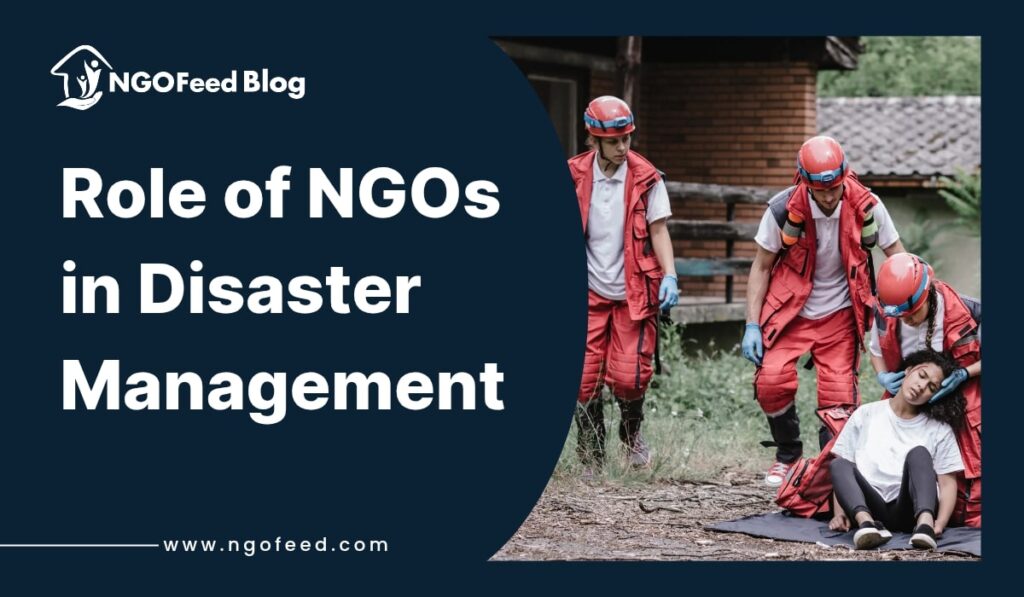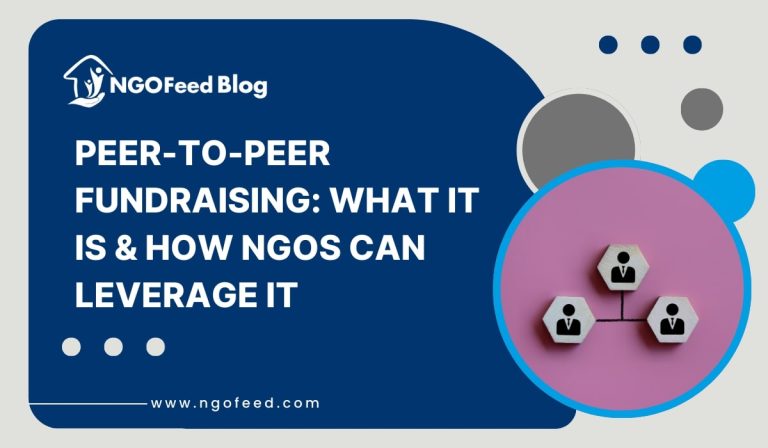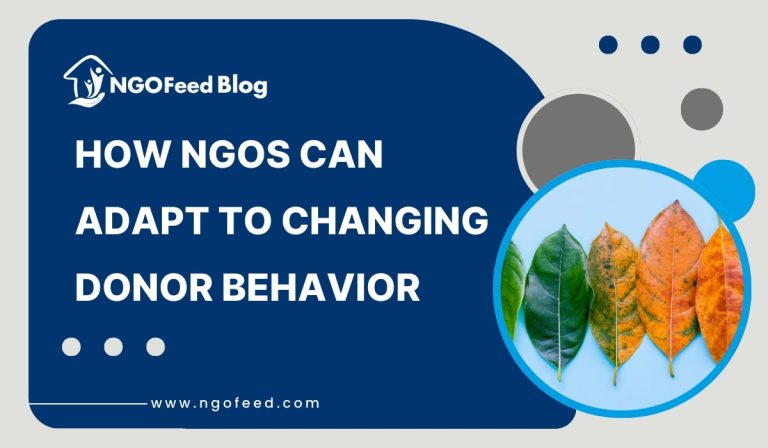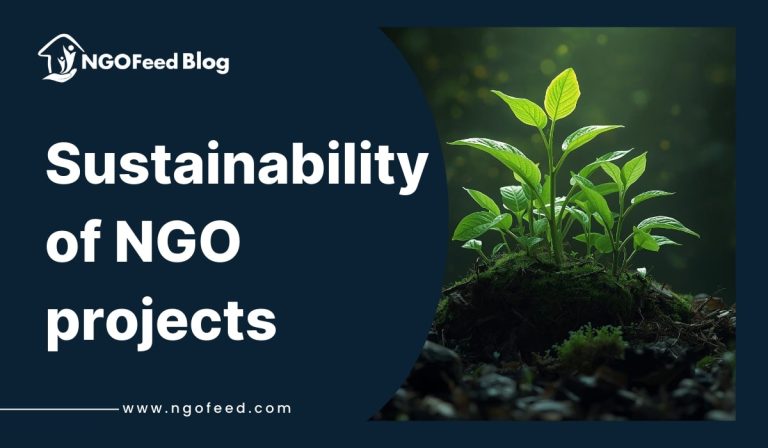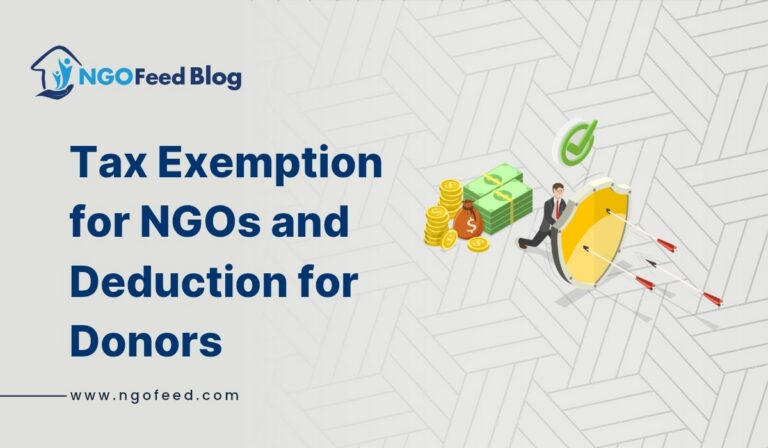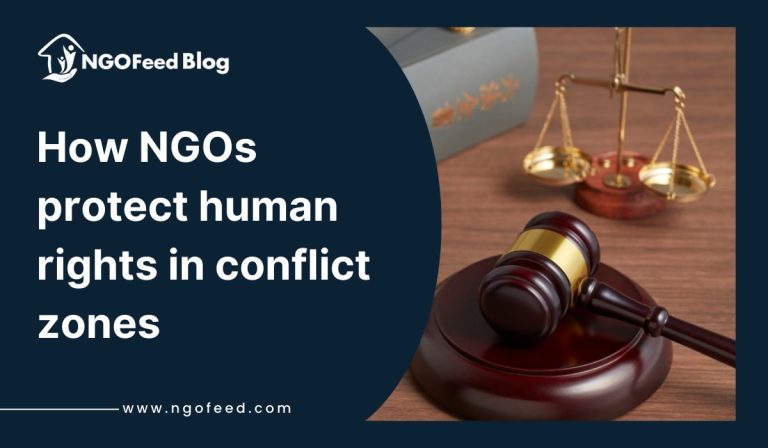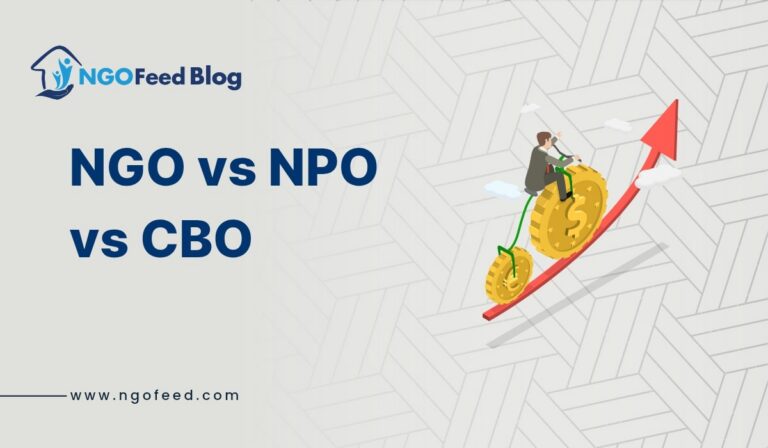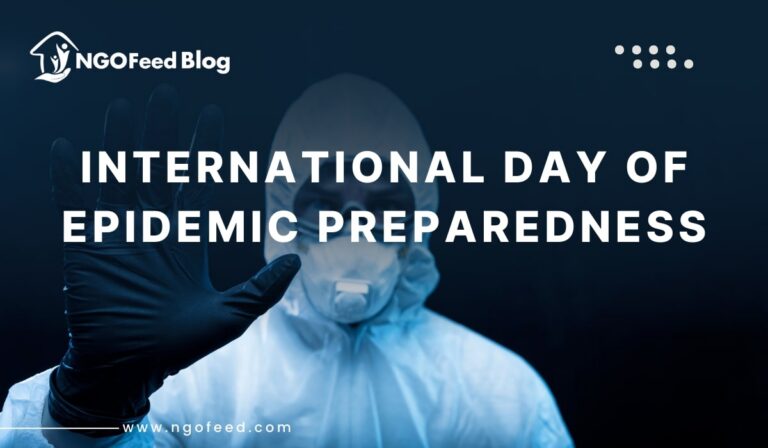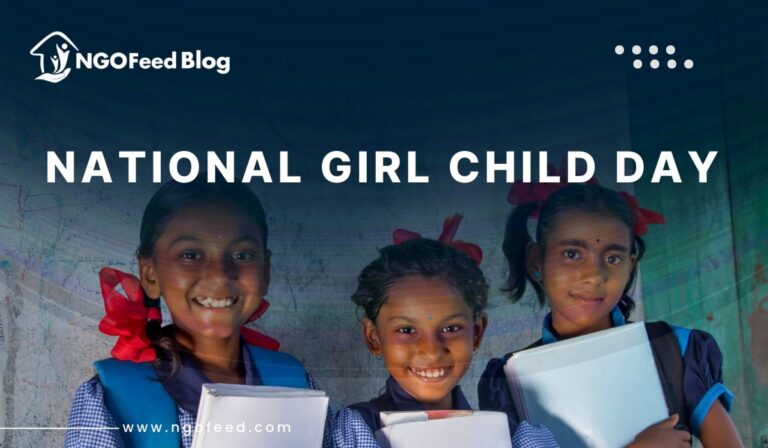Role of NGOs in Disaster Management: How frequently do you flip on a computer and find another natural catastrophe article—houses devastated, families relocated, towns in chaos? Your sense of powerlessness and needing to hold it in is returning. What will you do for this person? You may be surprised to learn that NGOs have previously addressed this issue. When calamity strikes, these crisis management all-stars deliver food, temporary housing, medical attention, and hope.
Despite being unable to fly, their activity is highly effective. The following piece will discuss NGOs’ important role in disaster assistance and recovery. Disaster aid groups cover community gaps outside pre-existing emergency groups. These unsung heroes are there during disasters, from preparation to recovery. Their great efforts, whether via life sacrifice, medicine, or affection for local citizens, renew trust in mankind from community to community.
NGOs: First Responders in Disasters
NGOs are mainly the very first ones to react to disaster events. Their proximity to the communities affected allows them to know the community’s needs well, and the fastness with which they respond to the community’s needs is impressive.
Rapid deployment
NGOs have their guys and volunteers on the ground, so being able to throw an eye on the situation that has happened fast and start delivering food, water and medicine within hours or days of a crisis is owing to their field experts. On the other hand, some agents, like the Red Cross, deployed their workers to distribute the relief items within 10 hours following the 2010 Haiti earthquake.
Expertise and experience
NGOs have preeminence in responding to disasters and know-how in organizing camps, trauma counselling and large-scale operations support. In working with local communities and authorities, they make sure that the aid is well organized and that it meets the cultural needs. What is of relevance here is the work that Oxfam did after the floods in Bangladesh. It helped rebuild houses and local sanitation systems based on people’s needs and environmental conditions.
Flexible and innovative
NGOs tend to be nimble, especially in comparison to large governmental bodies. They may be the ones to invent the latest technology and/or to come up with creative solutions to issues. Equally swift, they know how to solve problems when something doesn’t work.
During the Ebola outbreak in West Africa, NGOs were the main actors who applied public health communication methods, including radio, SMS, and community volunteers, to share life-saving information in remote areas unfavourable to connectivity.
NGOs respond in a timely manner and are one of the first providers of expertise and innovative solutions that save lives. The communities protected, such as refugees and the poor, have benefited immensely from the partnership with the group by gaining a new life after the crisis.
Read also: Role of NGOs in Disaster Risk Reduction
Important Roles of NGOs in Disaster Management
NGOs or Non-governmental organizations (NGOs) quickly respond to natural catastrophes. From a good number of roles, a few stand out nonetheless.
Coordinating Relief Efforts
NGOs have shown to be skilled in establishing relief crises and expediting aid to most affected populations. They collaborate with the major actors as a partner in order to decide what should be done, allocate the resources, and fill the gaps. NGOs are best able to connect with locals directly in the aftermath of the chaos of the early stage.
Providing Medical Assistance
Given the aftermath of the disasters, injuries and disease (such as infection) are the main problems. NGOs provide people with urgent medical aid, sanitation facilities and health science knowledge, whereas their lives are in great danger. Alongside the troops that are dispatched, the teams of doctors, nurses, and medics are deployed to the disaster areas, where they set up temporary clinics and provide life-saving treatment
Offering Shelter and Supplies
One thing devastating is losing the things one cares about most. NGOs will provide necessities like emergency shelters, food, water and other basic needs to the victims of the disaster. Sacks of tents, tarps, blankets, hygiene supplies, and cooking materials are given out so people who are homeless can have the necessities for survival.
Addressing Mental Health Needs
Not only is the trauma of living through one of the disasters emotionally and psychologically damaging, but it is also possible that they may be unable to function normally. NGOs are doing a great job in dealing with mental health by initiating counseling programs and community-based support groups. Community clubs that provide mental health services not only heal the community but also help them do so from the inside out.
On the other hand, for the governments and media coverage, such tragedies may become “yesterday’s story”, and NGOs stay. It is forgivable that they know their rescuing is a long process. NGOs’ constant engagement in the determination of needs, infrastructure restoration, employment search, and local partners’ aid are very needed for affected communities to get back to their normal lives. Long-term presence and dedication, especially, contribute greatly to the result.
Challenges Faced by NGOs in Disaster Response
Relief operations are by no means an easy task for NGOs, and they face numerous challenges in trying to offer help. More often than not, there is a shortage of funds because these organizations depend on contributions to enable them to carry out essential tasks. Government bureaus and administrative laws can also prohibit or hinder relief projects and efforts.
Limited Resources
NGOs must often be thrifty regarding their limited funds, supplies and human resources. They may be left with inadequate food, water, medication, or housing that only allows them to help some of the affected people. Having to decide who receives aid during a crisis is a burden problem to deal with. NGOs must budget their resources and funds with care -they must stretch those resources and finances as far as possible.
Poor Access
Disaster response teams sometimes have to overcome poor access to the affected areas, especially when road and air traffic systems have been disabled or destroyed. NGOs can be restricted to off-beaten tracks or places that have been isolated. They might have to cooperate with the local governments to get clearance from the disaster zones. Sometimes, they have to go through a bureaucratic process to gain official access, which can slow down the response procedure. Some countries are hesitant to accept aid from foreign countries or NGOs (non-governmental organizations) to address disasters that are taking place within their borders because of political matters.
Coordination Problems
A disaster will likely see many NGOs responding; thus, coordination, which has now become the most important thing, also becomes difficult because of it. The most important aspect of proper aid distribution should be communication and collaboration so that there will be no duplicate efforts.
Nevertheless, the NGOs can concentrate on their operations and may not be able to recognize the activity of the other NGOs too. They must cooperate with local government and the affected communities and bring them on board to marshal an appropriate response, which can be extremely difficult amid the chaos after a natural disaster.
NGOs, against all odds, are made up of those who only want to help the victims of disasters. The extraordinary thing about them is the fact that in spite of everything they go through to help, they always manage to overcome any kind of challenge and provide relief when it is needed the most. The finite resources and coordination of NGOs can be enhanced with timely and increased budgetary support. This will allow them to help more victims of disasters in the best way possible.
Best Practices for NGOs in Disaster Preparedness
As an NGO focused on disaster relief, following best practices in disaster preparedness will improve your ability to provide effective aid. Developing strong partnerships, training volunteers, and establishing funding sources are key steps you should take before disaster strikes.
Build Strategic Partnerships
Partnering with local governments, community groups, and other NGOs enhances your reach and impact. Meet with them to determine needs, avoid duplication of efforts, and leverage each other’s strengths. When disaster strikes, you’ll be ready to work together efficiently.
Train Your Volunteers
Your volunteers are your most valuable resource. Provide ongoing training on disaster response techniques, first aid, communication skills, and self-care. Run simulation exercises to help them gain experience in a low-pressure setting. Well-trained volunteers will be poised to help, not hinder, relief efforts.
Secure Diverse Funding
Using one financing source is dangerous. Find individual donations, private foundations, government grants, and corporate sponsors. Build trust in your company by explaining catastrophe planning and reaction. Pre-disaster fundraising ensures you have resources when needed.
Your NGO can respond quickly and strategically to disasters by forming strong alliances, training volunteers, and securing varied funding sources. You can best serve disaster-affected communities by staying current on best practices and technology. NGOs may be disaster relief leaders for years with proper planning.
The Future of NGO – Government Partnerships in Disaster Management
Increased Cooperation
NGOs and governments now appreciate that partnerships during disasters are important. By collaboration of all, they will be able to optimize their resources, not have any replication of the actions, and also provide the best assistance and help. We’ve also witnessed the partnerships between NGOs and governments develop during major disasters in the past, and this is a recent trend that will continue.
Data and Knowledge Sharing
As the NGOs and governments engage each other more, they’ll share necessary information, which contains maps, population data, locations of shelters and aid stations, and many more. They’ll also share their experience in taking action for disaster response as well, which will contribute to all of them making better plans in the future. This transfer of knowledge will, therefore, mean that in the course of future disasters, the initial response will be smoother.
Clearly Defined Roles
In big projects, the success of the joint work depends on the accurate delineation of functions and responsibilities. Governments and NGOs are expected to devise a memorandum of understandings that determine the main responsibilities for effective humanitarian aid during a disaster. As an illustration, the governments could invest in infrastructure and public service while NGOs would rather help the affected with their day-to-day basic needs such as water, food and medical attention. This will not only make future actions more efficient but also enable response to the consequences of the disaster to be more effective.
Increased Funding Opportunities
NGO-government-like coalition shows the way for granting funds, which may come from foundations and corporations that care about humanity and disaster relief works. By working jointly, NGOs and their governments are able to achieve economies of scale that result in the most efficient possible use of scarce resources. This will undoubtedly improve the joint management of disasters and, ultimately, disaster management systems.
Whilst these groups haven’t always worked together well, they need to work together more, pushing each other to where they need to be. Through proper cooperation and alliances forging, disaster management matrices could be constructed in a way that is far more effective and responsive than that which could be achieved without such bonds. The crux of the matter is that disaster relief and aid of the future are going in line with collaboration.
Conclusion
Although disasters shall continue to happen, we are lucky that the NGO heroes are there when the communities need them the most. Next time a disaster is reported on TV, imagine those first responders who are ready to go to the most affected zone even in less than no time, performing whatever it takes to save lives.
Or look for a way to participate apart from the one you can do right now. It surprises me that not many people pay attention to all these little things that they can do before and after an emergency happens. It is the case of people helping people that always get us to the point when we feel we’ve come through even the toughest of times. That is not because we all are different, but rather because we all share this commonality.

